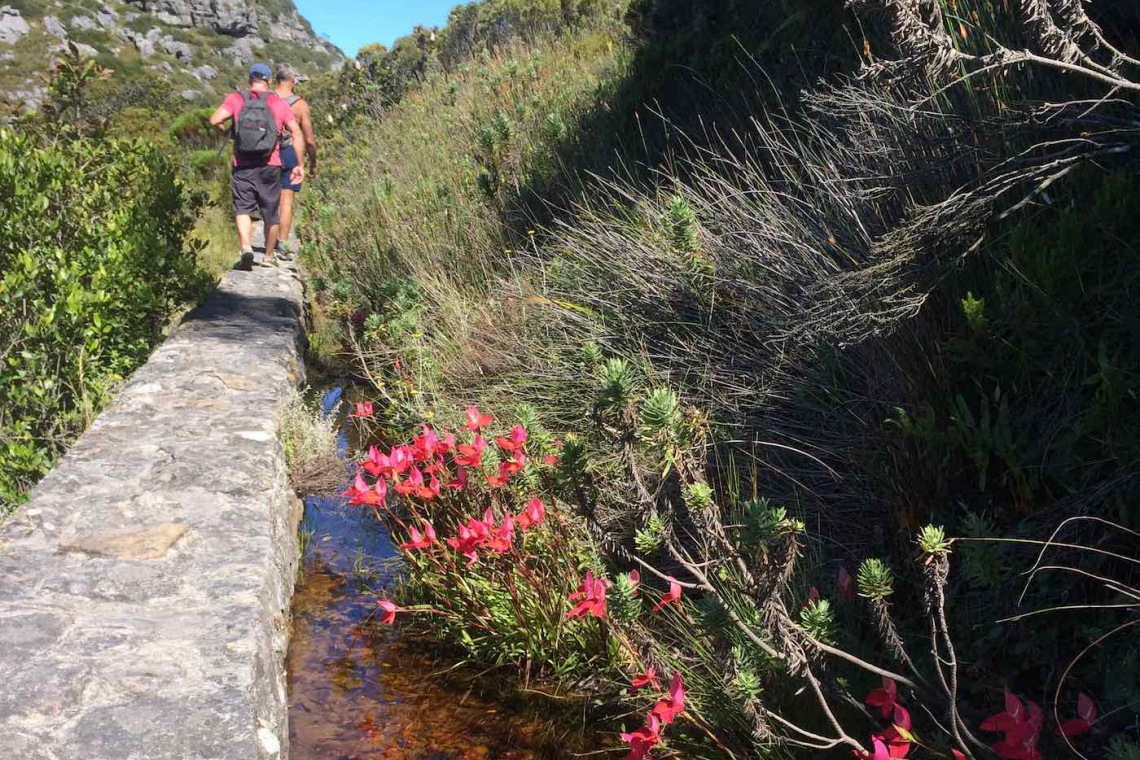Disas are red, disas are blue…. Celebrate Valentine’s day by hiking this spectacular Table Mountain trail
Instead of giving your beloved the traditional gift of roses on Valentine’s day, why not celebrate with a romantic flower walk? The memories of February blooms in their natural environment will endure well after the best bouquet has faded.
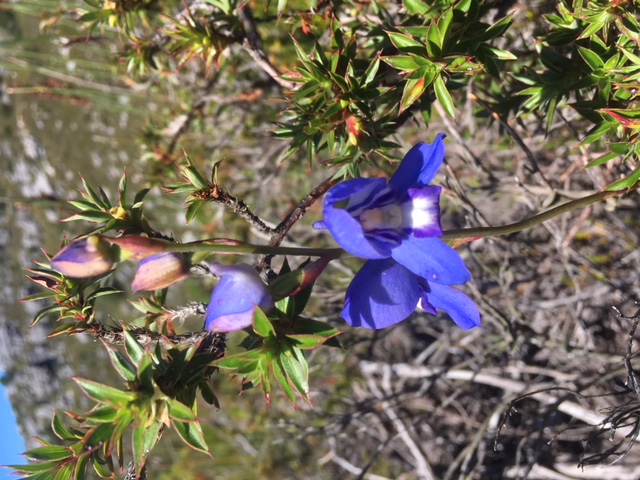
Blue Disa
You may also be interested in:
If you live near Table Mountain you are spoilt for choice when it comes to botanical walks. Some of the showiest floral specimens bloom in the month of love. The slender blue disa (Disa graminifolia) is fairly widespread, particularly on the Back Table and the chunky golden orchid (Disa cornuta), each stem with a spike of lance-shaped leaves and deeply hooded purple and silvery-white flowers, is still lurking on the Top Table, where you might also spot the eye-catching, cluster disa (Disa ferruginea) with its Christmas tree-shaped cluster of orangy-red flowers on a dark red stalk.
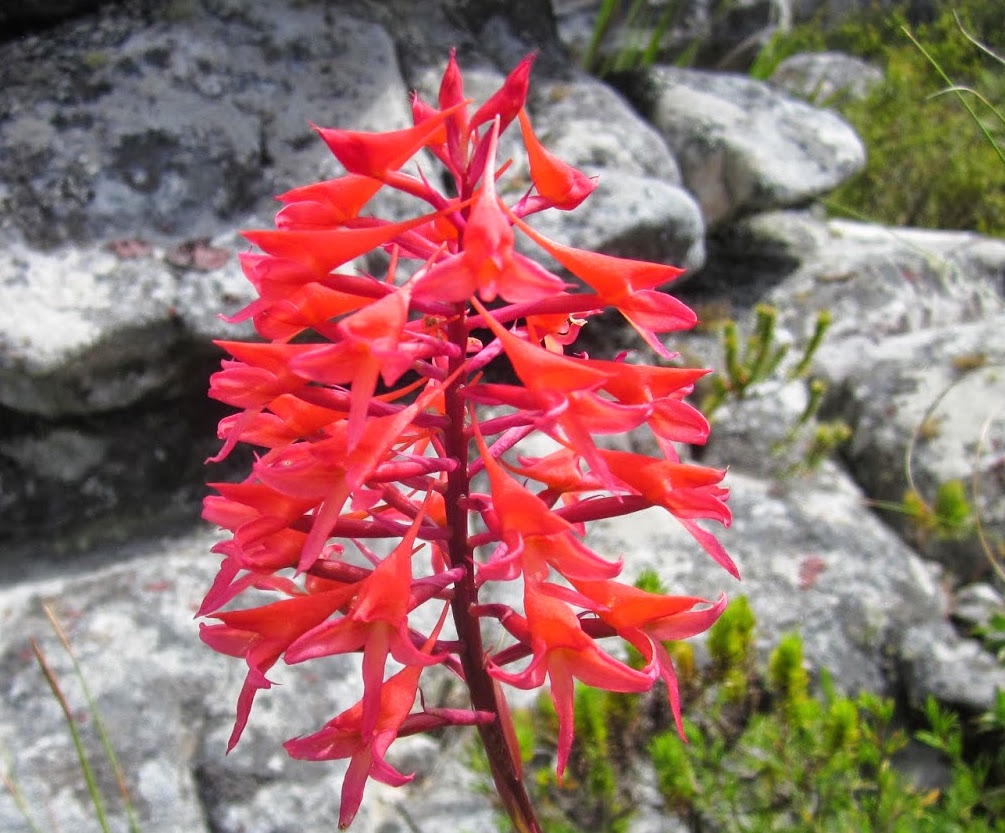
Cluster Disa
But the treat that most enthusiasts are stomping up the mountain to see is the showy red disa (Disa uniflora), which is flowering abundantly in several water courses, including that down Kasteelspoort, the Backwater Stream Ravine, which feeds the Hely Hutchinson Reservoir and the stream that crosses Smuts Track before flowing down Window Gorge. But the most impressive display of South Africa’s largest orchid is in the Aqueduct.
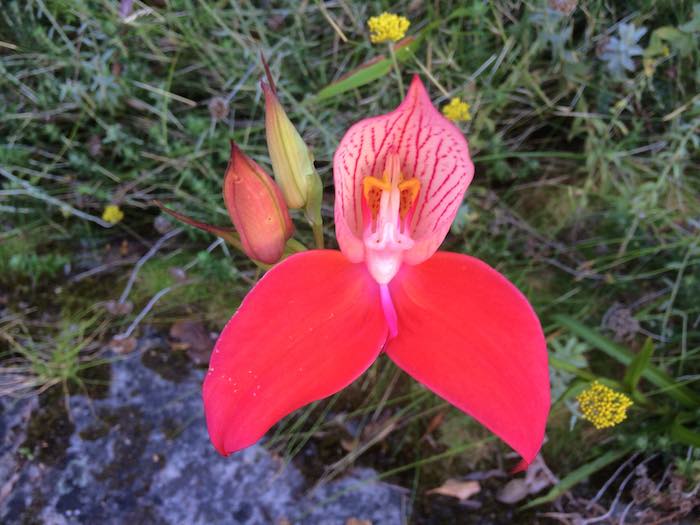
Red Disa
If you’re up to a four or five hour walk, this is disa-spotting central, with lots of blue disas and the odd cluster disa also visible along the path. Park at Kirstenbosch and head up Skeleton Gorge. Your first sighting of the iconic red disa, South Africa’s largest orchid and the floral emblem of the Western Cape, is near the top of this path.

King Protea
At the top turn right onto Smuts Track and, keeping your eyes peeled for disas and other delicate orchids, continue on up to the little bridge over the stream, on the upstream banks of which you’ll spot familiar flashes of red.
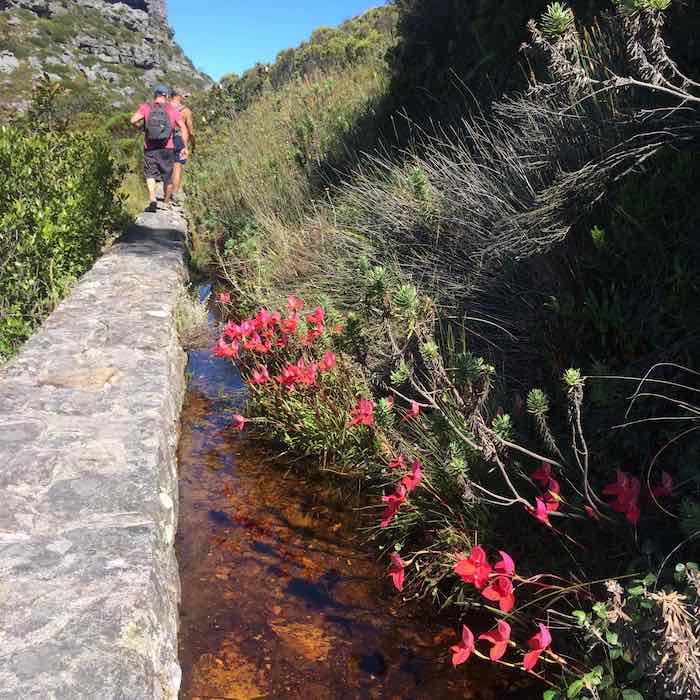
Red Disas in the Aquaduct
The turn off for the Aqueduct is little further on, at the top of the first rock band you come to. It’s no more than a ten-minute walk, provided, that is, you don’t get too distracted and delayed along the way by the magnificent king protea (Protea cynaroides), salmon-pink Table Mountain watsonia (Watsonia tabularis), and, the only gladiolus that is endemic to the Cape Peninsula, the delicate little autumn painted lady (Gladiolus monticola). Look for a faint path on the left, which soon opens out into a wide, man-made stone furrow. The display of red disas is jaw-dropping, there’s a lovely little waterfall in which too cool off and if you continue along this path for a short way you’ll see plenty of blue disas.
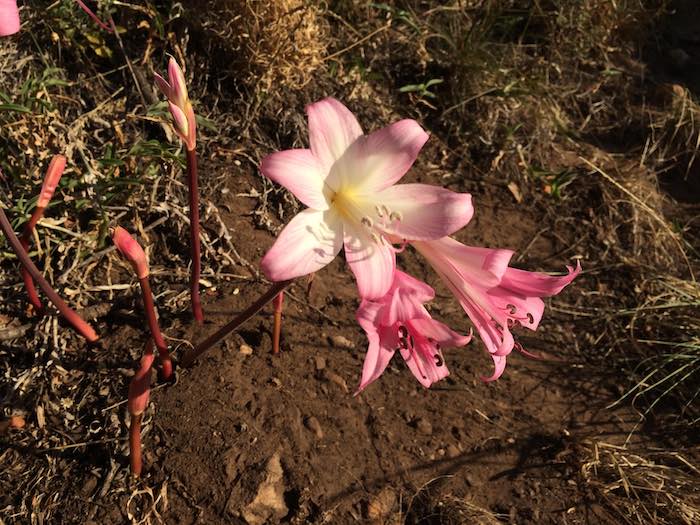
March Lily
You can return the same way (perhaps, for variety, returning to Kirstenbosch down Nursery Ravine rather than Skeleton Gorge). Even better is to continue along the Aqueduct to the little Waterworks Museum at the Hely Hutchinson dam then follow signs to Nursery Ravine or Skeleton Gorge.
The Aqueduct can also be accessed via the Kasteelspoort path from Theresa Avenue on the Camps Bay side. (A round trip that also takes about four to five hours.)
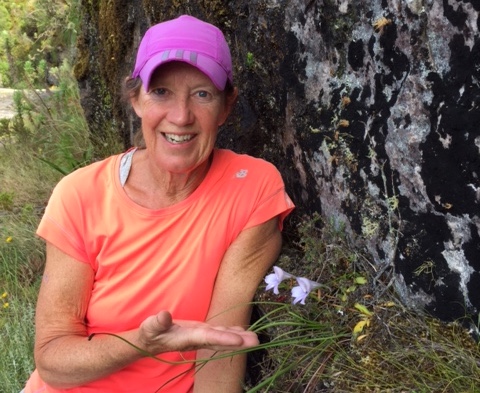
Drip Disas
Alternatively, if you’ve only time and energy for a shorter walk, follow the Pipe Track from Theresa Avenue (past towering pincushions and sugar bushes) then up Woody Ravine. This is an interesting route botanically as you start in shaded forest, pass through thicket (said to act as a fire buffer to protect the forest) then pop out into mountain fynbos where bright red crassula (Crassula coccinea), Table Mountain watsonia and lovely little blue lobelia (Lobelia coronopifolia) are sure to catch your eye. Turn left on the Spine of the 12 Apostles Path (yet more of the same as well as blue disas and other orchids) then head down Kasteelspoort. There are lots of red disas in the stream just below the bridge, and you’ll also encounter pink March lilies (Amaryllis belladonna) on the lower slopes. This circular, scenic route will take no more than three hours.
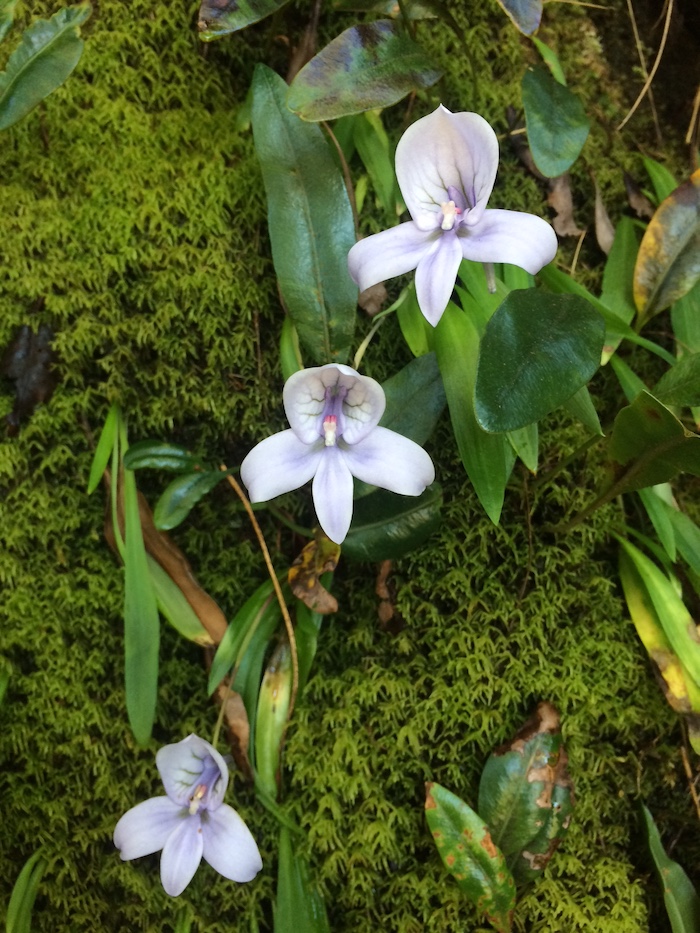
Drip Disas
Not familiar with the paths? Slingsby’s Table Mountain map (https://slingsby-maps.myshopify.com/products/table-mountain) available in digital, or waterproof, tear resistant hard copy, shows the paths and landmarks, along with distances and estimated hiking times.
Common Wild Flowers of Table Mountain (Struik Nature) by Hugh Clarke & Bruce Mackenzie, and Common Wild Flowers Of Table Mountain and Silvermine by Hugh Clarke, Bruce Mackenzie and Corinne Merry (Penguin Random House) are both user-friendly guides.

